Strategy August 20, 2019
Handy Guide To Communication In The Promo Industry
Email, text or call? There are more ways than ever to communicate with clients, and our guide will help you determine the best way to connect.
Picture this: A Google search brings up a company’s Instagram handle, where a promotional products rep can, in mere minutes, follow the account, fire off a direct message and (hopefully) get a reply with an email address for the marketing department. The rep can send an email, find the company’s physical address and mail off samples, then follow up on Instagram after receipt. Should these samples leave an impression and generate an order, what follows next is a flurry of emails, texts and phone calls along every step of the process, until the client has the final product in her hands.
It’s happening all over the promo industry: reps seamlessly bobbing in and out of several platforms, experimenting with what combinations best play to their strengths in servicing clients, while still holding onto their favorite form of communication. But the rules for these various modes – social media, email, text, videoconference and phone calls – can be very different.
That’s why Advantages has created this handy guide to help you navigate the complicated maze that is modern communication. We’ve rounded up best practices and put the spotlight on reps excelling at each. By simultaneously using these multiple methods, salespeople are able to reach their clients whenever and wherever. And so can you.
Social Media
Send a direct message – and score a sale – with this growing platform.
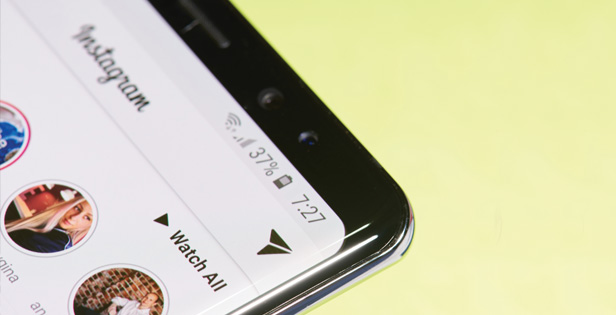
Best for: Showcasing your personality, establishing a direct connection and professing your love for a brand. “I’ve taken the cold call off the table,” says Ned Specktor, who’s based in Bloomfield Hills, MI, and does sales and business development for Top 40 distributor Geiger (asi/202900). “I don’t like to sell, which I know sounds bizarre, but I didn’t want to sell keychains. My metric for new business is, ‘I like your company, and I want to help you with your merchandise.’ If I stayed in a hotel I loved, or ate at a restaurant I enjoyed, or watched a Netflix special I really liked, I send a DM and tell them how impressed I was with their brand and what they were doing, and would love to send them some of my favorite branded items to show them how we roll.”
Frequency: Specktor sends three DMs on Instagram every day, which he says takes about 30 minutes. He points to the book The Compound Effect by Darren Hardy, and the idea that small behaviors practiced consistently over a long period produce massive results. But then? Specktor doesn’t follow up. “They’re either getting it or they’re not,” he says. “There are so many others out there, I don’t want to sell to anyone who doesn’t want to be sold to. But if I like that company and end up sending them swag, I will follow up to see how they feel about it.”
BONUS TIP
Procure an Email Quickly. Ned Specktor shoots a quick note to ask for the company’s logo file and mailing address, and the rest is, he hopes, history. “I want to provide value, and for the people who like it, let’s engage,” he says. “I’m not asking for anything out of the gate. I want to earn it.”
Language & Tone: Be honest and be yourself. “I say, ‘I love your brand, I’m super passionate,’” Specktor says. I use phrases like ‘send you guys cool swag.’ I don’t curb it based on the company.”
Response Time: Right away or relatively soon. Specktor has a 1-year-old and leaves at 5p.m. to go home for his kid’s bath time and dinner, “but it would never be more than 24 hours before I’d get back to someone,” he says.
Social Media Star
Ned Specktor, Geiger
After stints managing the Jonas Brothers and Demi Lovato, Ned Specktor chose to pivot to promo and seize upon the relationships he’d built in the entertainment world. Seven years later, he says, “it’s all going down on Instagram direct message.” He reaches out to three new companies daily – 720 annually – and over the past year he’s gotten six new clients directly from those efforts. One client spent $30,000 in their first year, he says.
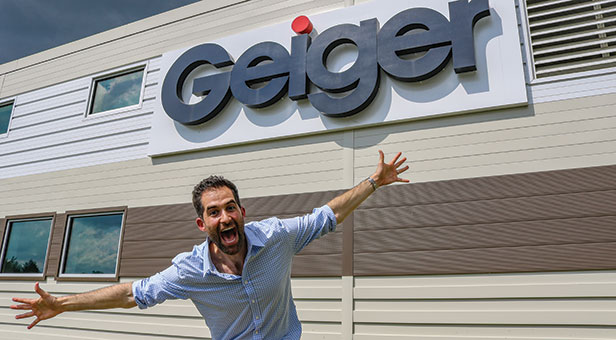
“Sure there are people crushing it on Facebook, LinkedIn and Twitter, but I’m on IG professing my love for brands,” Specktor says, adding that he dislikes cold calling for its intrusiveness. “If I did try to call,” he says, “how would I even get a CMO on the phone? A social media team can look at the DM whenever it works for them.”
When he gets a reply, Specktor asks for the right contact. “Once I get that email address, it’s such a win,” he says. If they’re keen, Specktor will send samples right away; lately, he favors Strideline socks or PopSockets with the company logo.
Not only does Specktor use Instagram prolifically, but he also hosts a YouTube show called SwagLife, which is about (yep) swag and (you guessed it) life. Specktor dispatches motivational life hacks and brief peeks into the latest products he’s digging. The videos are embedded in an email blast, and so far he’s recorded about 60 episodes.
Which mode of communication do you prefer when connecting with clients? Tweet at me if your best option isn't here. #Poll
— ASICentral (@asicentral) August 22, 2019
The most popular communication method is indispensable for today’s reps.
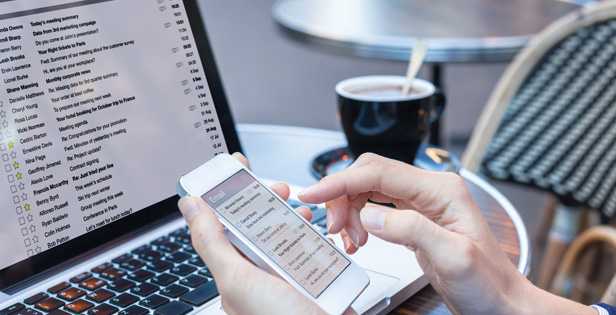
Best for: Order confirmations and tracking numbers, sending product ideas or quotes, and “quick answers for clients who already know what product they want,” says Brian Bettencourt, a Toronto-based account executive at Talbot Marketing (asi/341500). “Clients email me a lot looking for that information instead of picking up the phone. My client might be on the phone or on hold with their client; to multitask they can just send me an email to get that information.” Bettencourt admits that emails can be impersonal, and while some reps rely exclusively on email to make a sale, Bettencourt prefers to make a phone call or schedule an in-person meeting before transitioning to email for established relationships.
Frequency: Outside of the necessary communication to keep clients in the loop, which should be done as needed, Bettencourt keeps in touch with e-blasts about sales and promotions every three to four weeks.
BONUS TIP
Get Your Quote On. Brian Bettencourt uses industry software to send automatic professional quotes. Prospects can reply with comments or questions directly in the PDF (“Does this product come in this color?”) that moves the process along.>
Language & Tone: Bettencourt advises staying professional and businesslike in email communications.
Response Time: Usually Bettencourt responds within one hour or less during business hours. At the very least, reply by the end of the same day; anything else feels unprofessional, Bettencourt says. “Sometimes even if I have to wait to the end of the day to email a client who emailed me in the morning, I’ll feel bad,” he adds. “This method has translated to greater trust from my customers, which leads to more business.”
Expert Emailer
Brian Bettencourt, Talbot Marketing
 Brian Bettencourt used to make as many as 100 client phone calls a day. Over the past half-decade, however, he’s shifted to email. Now he sends about as many emails a day as phone calls he used to make, which adds up to an enormous time savings.
Brian Bettencourt used to make as many as 100 client phone calls a day. Over the past half-decade, however, he’s shifted to email. Now he sends about as many emails a day as phone calls he used to make, which adds up to an enormous time savings.
“I pride myself in being very quick in replying to clients via email,” he says, usually within 10 minutes. “I’ve been able to grow the business due to my quick response.” A 14-year industry veteran, Bettencourt senses the days of “schmooze and chit chat,” as he puts it, are waning, though he’ll still sometimes place a quick phone call to a new client or before a client OKs a purchase. “Before they place a first order, they still like to hear someone’s voice on the other end of the line,” he says. But more often, clients are looking for the quickest answer – and so is Bettencourt.
“I also love working with suppliers that are quick to respond to my emails when I need to ask a question about stock availability or a price check,” he says. “I need questions answered quickly too; I can’t work with suppliers that might take a day or two to reply to me.”
Texting
Instant responses and friendly exchanges make this an effective way to stay in touch.
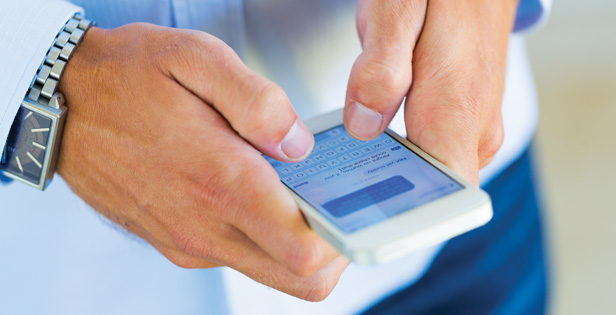
Best for: Shifteh Kalili, business and marketing consultant with Top 40 distributor American Solutions for Business (asi/120075), will send texts with shipping information or order updates as needed. Other times, she will text her established clients just to ask how their week is going. “I like to keep my clients as friends and for them to think of me whenever they need anything,” she says. “I always tell them they can count on me for anything, even if they think I don’t sell it, because I’ll help them find it or be able to provide it.”
Frequency: Use as needed when communicating essential information or processing an order. For friendlier drop-ins, gauge it to the level of your relationship with the client. Limit the check-ins if you aren’t overly close.
BONUS TIP
Get Paid Faster. When it comes to overdue payments, Shifteh Kalili says it’s beneficial to text a reminder; it conveys more urgency than an email. “If they’re late on an invoice, I’ll send a reminder over text,” she says. “Usually they pay that day.”
Language & Tone: Hip, young companies don’t expect a lot of formality anymore, Kalili says, which aligns with the promo industry’s message of fun. “These days, business is more collaborative, more easy-going, less ‘sincerely yours,’” she says. “It shouldn’t be strict or boring.” Kalili says she tries to stay somewhere between casual and professional, “and always respectful at all times. I try to mirror the person’s personality as well.”
Response Time: Kalili aims to respond immediately to clients, even if it’s just to confirm that she received a message and let them know when to expect a clear response. “I say things like, ‘Got it! Will work on this and get back to you by tomorrow!’ Generally, I think it’s very important to be available on every platform and form of communication that’s out there.”
Top Texter
Shifteh Kalili, American Solutions for Business
 Shifteh Kalili recently relocated to Nashville and is diving headfirst into earning clients, mostly from small businesses in the area like gyms, restaurants and hair salons. Lucky for her, they all love to text. While Kalili, makes a lot of first contacts via Instagram Messenger, she prefers to get the marketing person’s phone number and shift the conversation to text through her personal cellphone.
Shifteh Kalili recently relocated to Nashville and is diving headfirst into earning clients, mostly from small businesses in the area like gyms, restaurants and hair salons. Lucky for her, they all love to text. While Kalili, makes a lot of first contacts via Instagram Messenger, she prefers to get the marketing person’s phone number and shift the conversation to text through her personal cellphone.
Kalili’s impression is that marketing people often prefer to go back and forth over text than talk on the phone. “I’ll only do phone if something goes wrong,” she says. Kalili sends product ideas and checks in with clients about things like whether they received an order, all via text. She says texting is even more immediate than email, and clients like that Kalili is very accessible. “I think they like knowing I’m always available, because I try to pitch myself as an extension of their marketing team, a partner,” she says.
Perhaps surprisingly, there have only been a few instances where she’s received a text after 5 p.m. or on the weekends; if that’s the case, she simply gets back to the person the following morning or the next business day.
“I have ignored texts past 6 or 7 p.m., kind of to train them that I don’t answer texts that late,” she says. “I don’t apologize – I just tell them I received their text and will get on it.” While most of her clients with active orders text her, Kalili does still field phone calls from older people. “I have weird phone anxiety,” she says, “and I don’t answer unless I know the number, so I’m trying hard to save all those numbers” of the businesses who are more prone to talk on the phone.
She adds: “My opinion: Using text for going back forth on ideas is much better than email because it speeds up that process.”
Videoconference
The personal touch through a digital screen is possible thanks to the growing use of video.
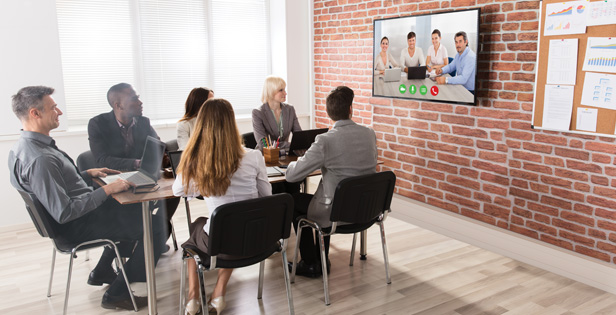
Best for: Getting in front of people and helping them remember you, says Sandee Rodriguez, owner of D and S Designs, a screen printer and embroiderer for almost 30 years based in Bridgeton, NJ. “Ads are kind of dying; I ignore them all day long,” she says. “If they’re not looking at ads, how are you going to get in front of your prospects and customer base? Live chats are the new postcard.” While she still sends all order updates and product info over email, she says “virtual in-person conversations” are helpful to get to know new clients.
Frequency: It depends on the individual, says Rodriguez. “If they’re a little more formal, busier or higher up, I wouldn’t ask for a videoconference until a little bit later,” she says, adding she would never video call someone out of the blue without it being scheduled.
BONUS TIP
Quickly Address Issues. Since you’ve already got your phone out, sometimes the quickest way to show a product in person is to hit that Facetime button. Once, a client’s batch of shirts had errantly come with the logo placed too low. The client quickly Facetimed Shifteh Kalili of ASB to show it was in the wrong spot, something that would’ve been harder to convey with a photo. “Even though there was a mix-up, they were very happy with the fact that I was available for something like that,” she says, “and they re-ordered.”
Language & Tone: Depends on whom you’re talking to, she says. “With my customers, it would tend toward more formal because I’m a professional, and I’m going to act accordingly at all times,” she says.
Response Time: The majority of videoconferences are scheduled ahead of time. But if you and your client are in the habit of quick FaceTime chats and you happen to miss a call, treat it like a text or phone call and try to respond as soon as possible.
Video Veteran
Sandee Rodriguez, D and S Designs
 Sales is about relationships, says Sandee Rodriguez. And for her, the best way to build trust is to see someone’s face, be it on Zoom (which she uses often), Facetime, Skype or a similar technology. “You can read body language and make eye contact,” she says. “It’s much better than email for relationship building.”
Sales is about relationships, says Sandee Rodriguez. And for her, the best way to build trust is to see someone’s face, be it on Zoom (which she uses often), Facetime, Skype or a similar technology. “You can read body language and make eye contact,” she says. “It’s much better than email for relationship building.”
Though she describes herself as a wordsmith, she says she just can’t communicate as well using only text and email. She knows it takes extra time to organize a video call, but she says it’s worth it for the highly personal touch she likes to provide clients. And because Rodriguez lives in an area that (by her description) isn’t economically strong, she works with many corporate clients who aren’t local. She’s also the founder of a growing business that offers coaching to the promo industry. “I also have my own coach, for the first time this year,” she says, “and I do all that through Zoom meetings.”
With Zoom, a company that provides remote videoconferencing using cloud computing, she’s recorded meetings to revisit later, taught classes to coaching clients, shared her screen and invited several people to the same chat. The program works on cellphones and desktop computers.
She says a drawback to videoconference is that it’s sometimes hard to find time for a video chat, unlike an email or text where someone could respond at their convenience, or while doing something else. “Video chats aren’t something you do on the fly, just as if they were a real in-person meeting,” she says. But when she video chats with a client, she says the conversation is more organic than a chain of emails could ever be.
“I process probably 200 emails a day, and that’s not even looking at all the vendor emails,” she says. “I probably have 2,000 in my inbox that are never going to happen. But I know there’s a client base out there looking for people like me, and these live opportunities are the way to leverage it.”
Telephone
The old standby can still be devastatingly effective at drumming up business.

Best for: Short calls to check in or to establish trust and a human connection in newer client relationships. “If it’s a new project, even if it’s a customer I’ve had for a while, I like a phone call to get a feel of where we’re going,” says Lori Nor, sales assistant for Total Promotions Inc. (asi/345580) in Highland Park, IL.
Frequency: As needed, especially to ensure timely order delivery. Some factories are hard to reach via email, so she finds it’s quicker to pick up the phone and check on something. “If we actually talk on the phone, they remember me,” she says. “Then when they see my order, it may get expedited.” These calls are brief but effective, she says.
BONUS TIP
Get the Job Done. Sales reps in the promotional products industry have migrated to email, but ignoring the phone completely is a mistake, says Gregg Emmer, vice president and chief marketing officer of Top 40 distributor Kaeser & Blair Inc. (asi/238600). “The vast majority of people in the industry have let email and texting take over for conversation. A phone call is always the fail-safe if other means of communication aren’t getting the job done.” When the back and forth adds up or confusion reigns, make a call to resolve the issue or connect with clients quickly and easily.
Language & Tone: Above all else, be sincere, Nor says. “You lose quite a bit with an email if you don’t know the person already,” she says. “How serious or sincere are they? Are they in a bid war, are they wasting my time?”
Response Time: Nor tries to call back immediately, and at least the same day or early the next day. “That’s extremely important,” she says. “Put yourself in the other person’s shoes. If I’m left waiting, I don’t think they’re taking my order very seriously.”
Phone Pro
Lori Nor, Total Promotions Inc.
 Lori Nor prefers the classic direct phone call for a better overall experience for both parties. “A call can help eliminate assumptions of what a customer is looking for,” she says. “Especially when you have initial contact, find time to actually communicate directly. Emails, the back and forth – things can be misunderstood, and there can be frustration. It feels more personal when you speak to someone. Emails just feel a little more removed from the process.”
Lori Nor prefers the classic direct phone call for a better overall experience for both parties. “A call can help eliminate assumptions of what a customer is looking for,” she says. “Especially when you have initial contact, find time to actually communicate directly. Emails, the back and forth – things can be misunderstood, and there can be frustration. It feels more personal when you speak to someone. Emails just feel a little more removed from the process.”
For Nor, emailing starts only after an established discussion has pinpointed all aspects of what a customer wants. Email then helps her speed orders along, but then? Nor still takes time to send handwritten thank-you cards and sometimes follow up again by phone at the end of a business transaction, especially for newer clients.
When asked about the “phone anxiety” increasingly cited by younger generations as a reason they prefer less confrontational communication methods, Nor says learning to be comfortable with the phone again is crucial for demonstrating personalized service. Yes, she admits, it all takes longer by phone, but having one phone call with a customer “so they know you’re a human being” is a must, she says: “People can hear in your voice if you’re serious, if you’re taking the job seriously enough. Otherwise, it’s just pressing buttons. That’s not how the world works. There are people on the other end of those buttons.”
Sarah Protzman Howlett is a contributing writer for Advantages.
